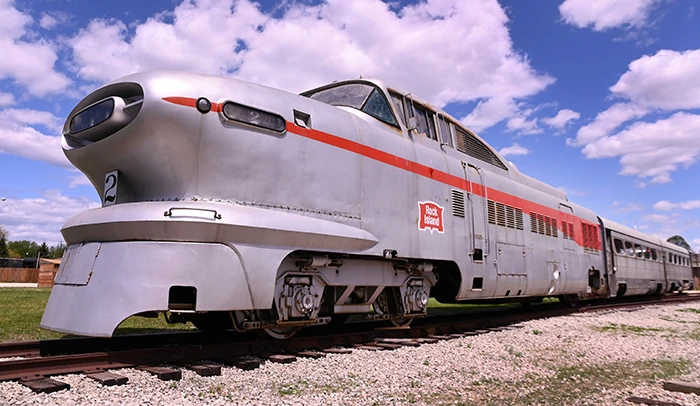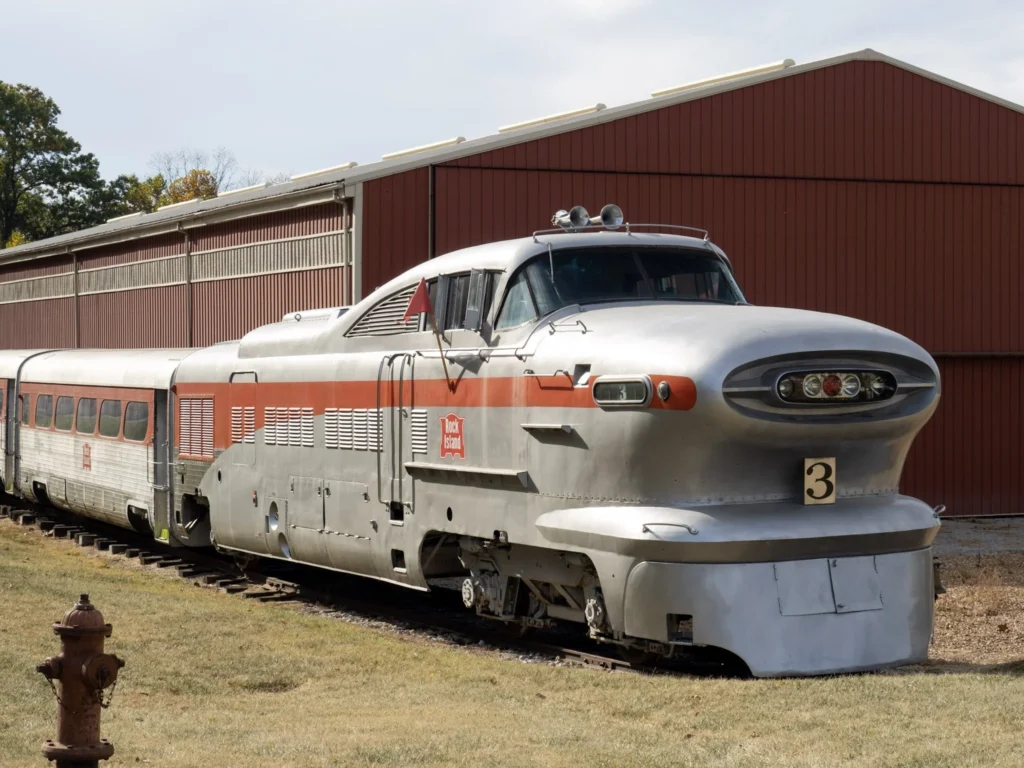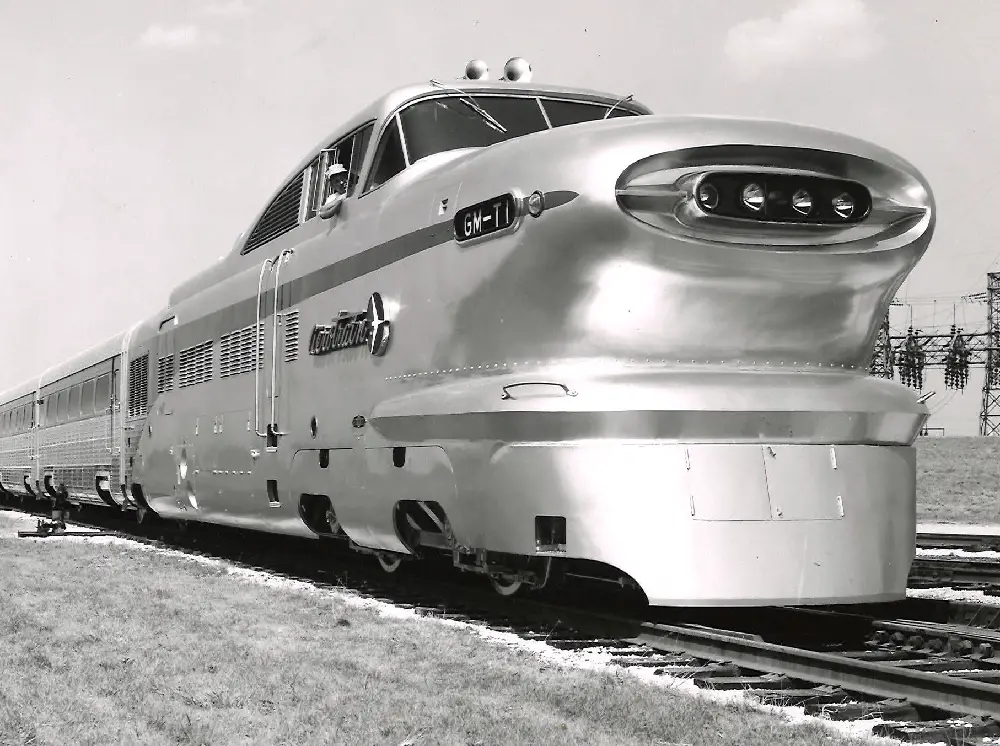The 1950 Rock Island GM Aerotrain is a fascinating chapter in the history of rail travel. Designed to revitalize passenger rail service during a time of increasing competition from automobiles and airplanes, this innovative train showcased the engineering prowess of its era. In this blog, we’ll delve into the Aerotrain’s history, design features, operational challenges, and lasting legacy.
A Vision for Modern Rail Travel
Introduced in 1956, the Rock Island GM Aerotrain was a product of collaboration between the Rock Island Line and General Motors’ Electro-Motive Division. With the goal of attracting passengers back to rail travel, the Aerotrain aimed to blend speed, comfort, and style in one sleek package.

Innovative Design Features
The Aerotrain stood out for several reasons:
- Streamlined Aesthetics: Its aerodynamic design was inspired by aircraft, minimizing air resistance and allowing for faster speeds. This forward-thinking approach helped the Aerotrain cut through the wind with ease.
- Lightweight Aluminum Construction: Built primarily of aluminum, the Aerotrain was significantly lighter than traditional trains. This not only improved fuel efficiency but also contributed to its impressive acceleration.
- Passenger Comfort: Inside, the Aerotrain offered spacious seating and large windows, ensuring a comfortable and enjoyable travel experience. The emphasis on passenger amenities was a key selling point.
Operational Challenges
Despite its innovative design, the Aerotrain faced significant challenges in the market. The rise of interstate highways and affordable air travel led to a decline in train ridership. While the Aerotrain was initially popular, it struggled to maintain consistent ridership and was eventually retired in the early 1970s, with only a few units produced.

Influence on Future Rail Designs
While the Aerotrain did not achieve lasting commercial success, its impact on rail travel was notable. The principles of aerodynamics and passenger comfort it introduced paved the way for future high-speed trains, influencing modern rail design and engineering.
Preservation and Legacy
Today, the legacy of the GM Aerotrain lives on through preservation efforts. Several units have been restored and are showcased in museums, allowing enthusiasts and historians to appreciate this iconic piece of rail history. The Aerotrain is a testament to the ambitious spirit of innovation that characterized the mid-20th century.
Conclusion
The 1950 Rock Island GM Aerotrain represents a unique moment in the evolution of rail travel. While it faced challenges that led to its retirement, its influence on train design and passenger experience is undeniable. As we look toward the future of transportation, the Aerotrain serves as a reminder of the bold ideas that shaped the industry.
By celebrating the history and significance of the GM Aerotrain, we can better appreciate the journey of rail travel and the innovations that continue to emerge in this ever-evolving field.




